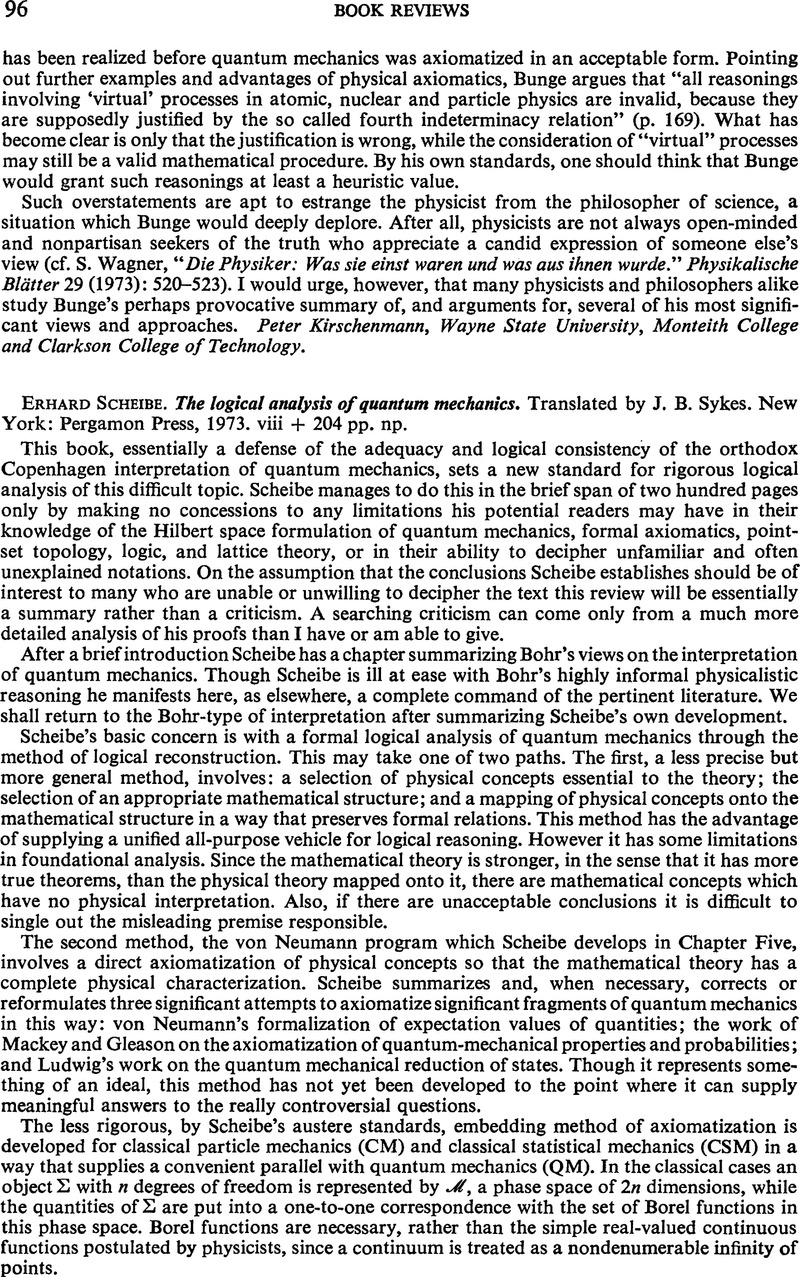Published online by Cambridge University Press: 14 March 2022

1 John von Neumann, Mathematical Foundations of Quantum Mechanics. Translated by R. Beyer. Princeton: Princeton University Press, 1955, pp. 247–254. A very helpful summary of this field, one that influenced the evaluative conclusion presented here is Bas C. van Fraassen, “The Labyrinth of Quantum Logics” in Boston Studies in the Philosophy of Science. Vol. XIII, pp. 224–254.
2 George W. Mackey, Mathematical Foundations of Quantum Mechanics. New York: W. A. Benjamin, 1963, pp. 64–65.
3 In view of Scheibe's command of the literature it is surprising that he discusses measurement with absolute accuracy without noting the results established by H. Araki and M. Yanase, Physical Review, 120 (1960), p. 622 and M. Yanase, Physical Review, 123 (1961), p. 666 showing that any quantum mechanical quantity which does not commute with every conserved quantity cannot be measured exactly. Scheibe's requirement, for quantities measurable with absolute accuracy, that they have point spectra and commute pairwise, remains logically valid. But the type of self-adjoint linear operators he treats do not represent quantities, e.g. the charge of an electron, which commute with all observed quantities.